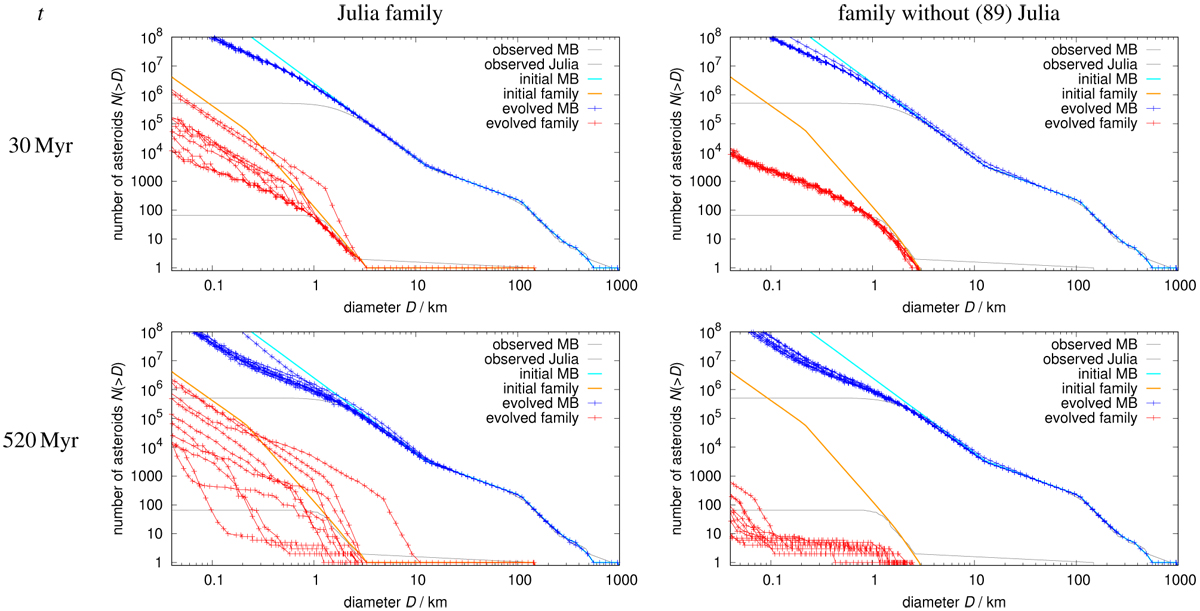Fig. A.2

Cumulative size-frequency distributions N(>D) resulting from two Monte Carlo collisional models: the main belt and Julia family (left column); the main belt and the family without the largest remnant (89) Julia (right column). The main belt SFD is plotted in blue and the family SFD in red; the respective initial conditions are plotted in cyan and yellow, and the observations in gray; the bend at around D ≃ 1 km is mostly due to the observational incompleteness. The situation at time t = 30 Myr (top row), and t = 520 Myr (bottom row) is shown. There are always 10 runs with a different random seed in order to see lower probabilityevents. The first model demonstrates that the Julia family is by no means an exception; the second model shows that small fragments (from a single breakup) decay quickly within a few 100 Myr at most.
Current usage metrics show cumulative count of Article Views (full-text article views including HTML views, PDF and ePub downloads, according to the available data) and Abstracts Views on Vision4Press platform.
Data correspond to usage on the plateform after 2015. The current usage metrics is available 48-96 hours after online publication and is updated daily on week days.
Initial download of the metrics may take a while.


